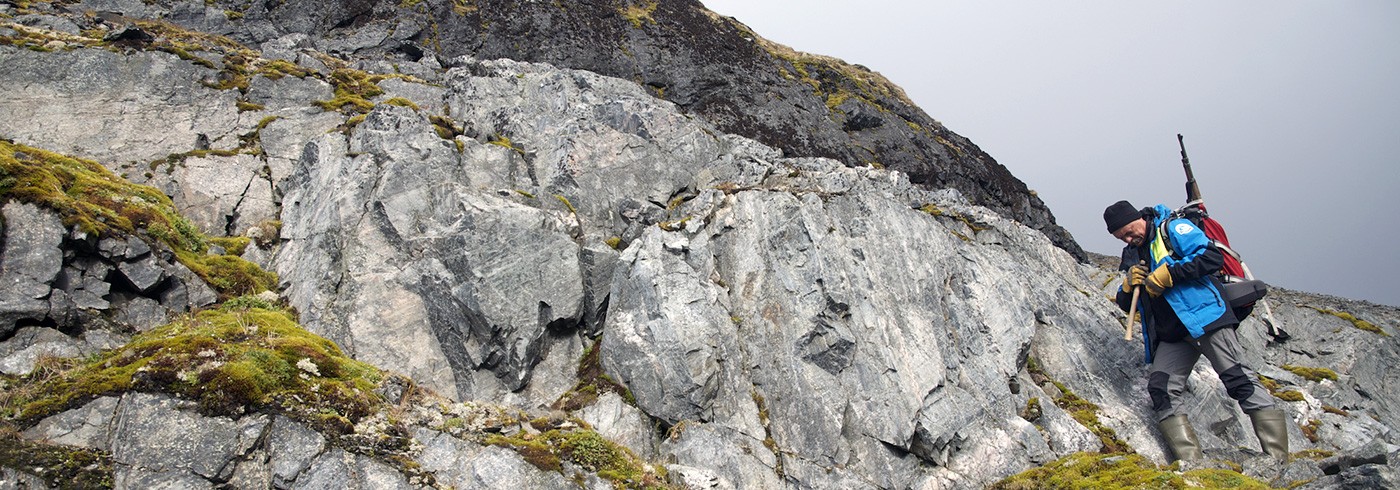Shortly after we arrived to the Polish station two days ago we got the message that our helicopter flight to two inland localities and then back to Longyearbyen was adjourned to Friday. This because the Governor of Svalbard’s office wants to use the helicopter for their purposes and they always go first, also in non-emergency situations – the consequences for others, who had bookings several months in advance, does not matter.
Thus, we were angry, had a disappointing call home to family, cancelled several weekend activities with our loved ones, who expected us home after five and a half weeks, checked our air tickets and prepared for changing and cancelling/rebooking them, respectively. And, of course, we continued to be angry quite some time… But then we got back to reality. There’s nothing we can do except making the best out of the situation.
We packed our equipment for transport to Longyearbyen and checked the weather report. Calm and sunshine with some clouds for the 5th – a dream for a helicopter flight with field work on inland localities… Well, we decided to have some fun instead of sitting around here at the station, and did some geology and Zodiac driving (Yes, I usually don’t like motorboats, they are disturbing the beauty of nature for us kayakers. But I have to admit, a Zodiac is fun. And, of course, this is professional use 😉 ).
Because of our incident with the outboard engine in the storm we were still missing two samples in our ”extended” scientific programme (the addition in Hyttevika after we left Sørkapp early because of the weather). So we decided to leave Hornsund at noon to use high water for the trip to Skoddebukta.
Yesterday’s weather was even better than promised by the weather report. We dropped two researchers from the station at Hyttevika and went then slowly on through the shallow waters to Skoddebukta. Whales were still missing amongst our animal observations during this year’s expedition. The belugas apparently were aware of it and met up between Nottinghambukta and Skoddebukta. Nice – we turned of the engine and waited – cameras ready. But unfortunately their interest for us didn’t match our interest for them.

Karolina Gołuchowska, Maciej Manecki, and Karolina Kośmińska traverse southernmost Torellbreen, Wedel Jarlsberg Land, from Skoddebukta to Solheimfjellet. Photo: Henning Lorenz
Well, instead of complaining we went on to the beauties of Torellbreen and the colourful Raudfjellet. Torellbreen is far from being the continuous wall of ice in the sea it once was, but it is still impressive. In Skoddebukta we discovered that all the rain during the last two weeks transformed the two kilometres between the beach and Nannbreen/Solheimfjellet to a mud pit. Pretty muddy around the feet we decided to traverse the lower reaches of Austre Torellbreen which, luckily, was in a better condition than slippery Werenskioldbreen last week.
Then some moraine climbing again – these things never heard of physical laws and critical angles for slopes, someone should tell them about it – and we reached the profile through Sofiebogen and Deilegga groups at Solheimfjellet. These rocks are really similar to what we have seen on Prins Karls Forlandet – but similarity is not enough, we have to confirm it. Also, they expose a key contact in the Proterozoic successions of (at least) southern Spitsbergen.
Although this area was visited several times before we made some observations which do not fit the ”classical” interpretation. After our return home we have to go back to the old papers and have a close look on the evidence and interpretation presented there. On site we took the remaining two samples which now are even more important than expected and returned to the Zodiac.
It’s darker now during the night, even on Svalbard. Around midnight we picked up our two friends in Hyttevika. On the way we met the belugas again and had a short talk to the skipper and his guests on S/Y Arctica II. Back at the station when the night is darkest, 01.00 am. What a wonderful day this has been!
Now the flight for tomorrow is confirmed and we hope for good weather.
Henning Lorenz, Uppsala universitet










